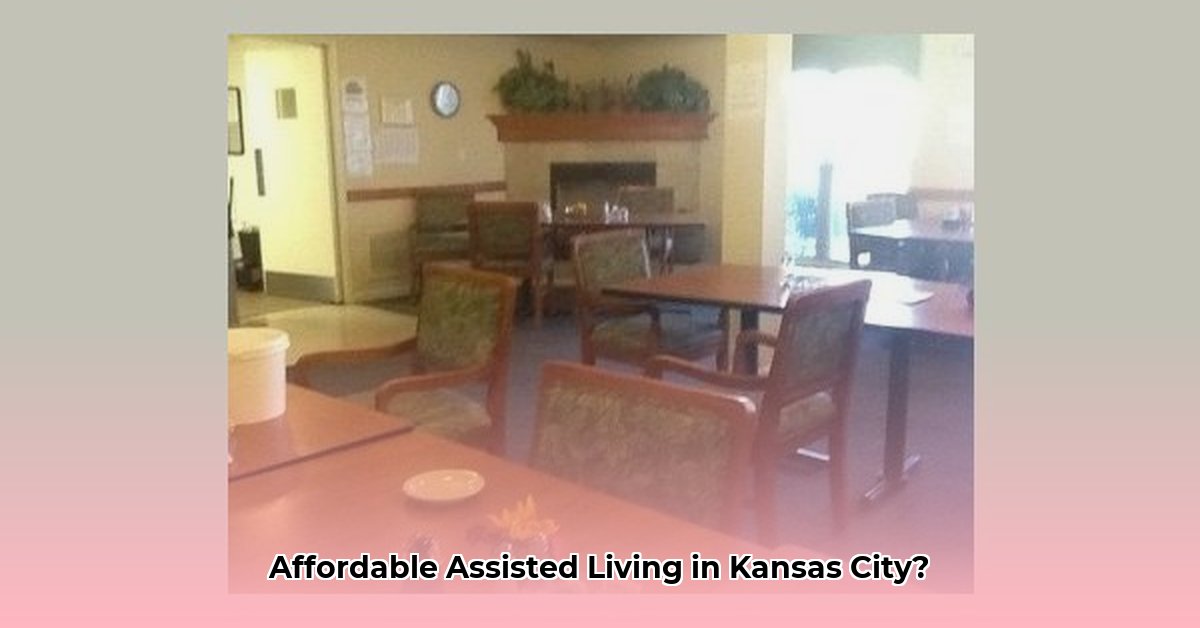
Delaware Highlands Assisted Living (DHAL) in Kansas City, Kansas, provides a vital service: affordable, high-quality assisted living for low-income seniors. For other examples of assisted living facilities, see this example facility. This article examines DHAL's unique features, its financial model, and its position within the competitive landscape, offering insights for potential residents, families, and stakeholders.
Services and Amenities at Delaware Highlands
DHAL offers comprehensive care, exceeding basic assisted living standards. Residents receive personalized assistance around the clock, ensuring their needs are met. Nutritious meals cater to diverse dietary requirements. Transportation services simplify errands and appointments. Engaging social activities combat isolation and promote well-being, including planned outings, games, and workshops. The facility features comfortable common areas, a beauty salon, and a chapel. Do you want your loved one to experience a supportive community, fostering independence and joy? DHAL's amenities support this vision.
Understanding DHAL's Income-Based Model
DHAL's distinctive income-based pricing model, utilizing Section 8 and Section 42 funding, ensures accessibility for low-income seniors otherwise unable to afford assisted living. This addresses a significant gap in the healthcare system. However, reliance on government funding creates vulnerability to policy changes or budget cuts, impacting both residents and DHAL's long-term stability. Careful financial management is critical. Is this reliance on government funding a sustainable long-term strategy for DHAL? Further investigation is needed.
Pros and Cons of the Income-Based Model:
| Advantage | Disadvantage |
|---|---|
| Increased accessibility for low-income seniors | Vulnerability to changes in government funding |
| Financial stability for residents | Potential for limited scalability and expansion |
| Fulfills a critical community need | Requires robust financial planning and risk management |
Competitive Analysis of the Kansas City Market
DHAL occupies a unique niche, prioritizing affordability and accessibility unlike many luxury-focused competitors. Direct competitors are likely other government-subsidized facilities or those with similar pricing models. Comparative data on services, pricing, and resident satisfaction would further illuminate DHAL's competitive position. Analyzing the demographics and needs of low-income seniors in Kansas City is vital for understanding DHAL's market share and impact. How does DHAL differentiate itself in this niche market? A detailed competitive analysis is needed to answer this question.
Financial Sustainability: Challenges and Opportunities
DHAL's financial health heavily depends on consistent government funding, posing a vulnerability to funding reductions or policy shifts. What strategies can mitigate this risk? Proactive measures are crucial.
Strategies for Enhancing Financial Stability:
- Diversify Funding Streams: Explore additional funding sources, such as private donations and grants.
- Develop a Robust Reserve Fund: Build a financial reserve to safeguard against unexpected shortfalls.
- Strengthen Advocacy Efforts: Engage in advocacy to secure continued funding and support.
- Optimize Operational Efficiency: Implement cost-saving measures without compromising quality.
- Transparency and Accountability: Maintain open communication with stakeholders, demonstrating fiscal responsibility.
Actionable Recommendations for Stakeholders
DHAL's success depends on collaborative efforts from various stakeholders. The table below outlines tailored recommendations.
| Stakeholder | Short-Term Actions | Long-Term Strategies |
|---|---|---|
| DHAL Management | Improve marketing and outreach; forge partnerships; implement financial monitoring. | Explore strategic expansion; develop alternative funding strategies (e.g., endowments); implement performance indicators. |
| Potential Residents | Visit the facility; attend community events; engage with staff. | Actively pursue available resources and support; stay informed about eligibility criteria. |
| Government Agencies | Maintain open communication with DHAL; emphasize program value; ensure fair review processes. | Advocate for increased funding; explore innovative financing models and legislative changes. |
Risk Assessment and Mitigation
Proactive risk management is essential for DHAL's long-term sustainability.
| Risk Category | Likelihood | Impact | Mitigation Strategy |
|---|---|---|---|
| Funding Changes | Medium | High | Diversify funding sources; build financial reserves; actively advocate for policy changes; |
| Increased Competition | Low | Medium | Highlight unique value proposition; improve marketing; enhance services. |
| Reputation Damage | Low | High | Prioritize resident care; address resident feedback; maintain transparent communication. |
| Regulatory Non-Compliance | Low | High | Invest in staff training; implement robust record-keeping systems; adhere strictly to regulations. |
| Staffing Shortages | Medium | High | Offer competitive wages and benefits; foster positive employee relations; develop creative recruitment strategies. |
Conclusion: A Crucial Community Asset
Delaware Highlands Assisted Living is vital in providing affordable, high-quality care for low-income seniors in Kansas City. Its future hinges on proactive financial planning, effective risk management, and strong stakeholder collaborations. The facility’s dedication to serving this vulnerable population underscores the importance of accessible and dignified senior care.